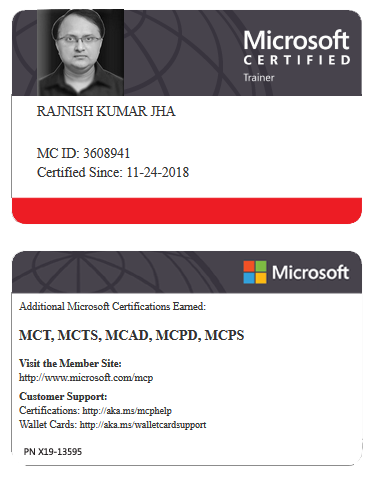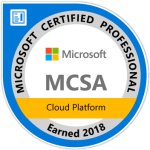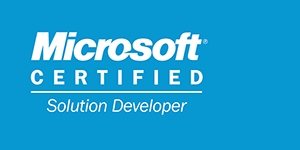Azure Virtual Machine Scale Sets (VMSS) are a powerful feature in Azure that enables the automatic scaling and management of a set of identical Virtual Machines (VMs).
With VMSS, you can deploy, manage, and automatically scale a set of VMs, which is ideal for applications that require scalability and high availability.
VMSS is primarily designed for workloads that can be distributed across multiple VMs to meet varying demand levels.
Here are the key things to know about Azure Virtual Machine Scale Sets.
Basic Concept of VMSS
Definition: Azure Virtual Machine Scale Sets allow you to create and manage a group of identical, load-balanced VMs. They are designed to provide scalability and availability for your applications.
Auto-scaling: VMSS can automatically adjust the number of VM instances based on demand. This helps to handle increases or decreases in workload without manual intervention.
Uniform VM Deployment: All VMs in a scale set are deployed with the same configuration, such as the same VM size, operating system, and image.
Key Features of VMSS
Automatic Scaling
VMSS automatically scales the number of VMs in or out based on metrics like CPU usage, memory usage, or custom application metrics.
Auto-scaling helps optimize resources and cost.
Scaling out (increase VMs)
When resource usage exceeds a set threshold (e.g., CPU > 80%), VMSS adds more VMs to distribute the load.
Scaling in (decrease VMs)
When resource usage drops below a threshold (e.g., CPU < 50%), VMSS removes unnecessary VMs to reduce costs.
Load Balancing
VMSS works seamlessly with Azure Load Balancer (or Application Gateway) to distribute incoming traffic across the VMs in the scale set.
This ensures high availability and load distribution.
Rolling Updates
VMSS supports rolling updates to update the VMs in the scale set.
This minimizes downtime during updates, as it updates instances in batches instead of all at once.
This feature ensures that the application remains available while updates are being applied to individual VMs.
Integration with Availability Zones
You can deploy VMSS across multiple Availability Zones in a region.
This helps ensure high availability and fault tolerance by distributing the VMs across different physical locations within the same region.
OS and Application Upgrades
VMSS can manage operating system and application upgrades at scale.
It integrates with Azure Automation and Update Domains to ensure minimal disruption to running applications during updates.
Custom VM Images and Extensions
You can use custom images to create specialized VM configurations, or apply extensions (such as Azure Custom Script Extension or VM Diagnostics Extension) to VMs in the scale set.
Benefits of VMSS
Scalability
VMSS allows your applications to scale out (increase VMs) or scale in (decrease VMs) automatically based on workload demand.
This elasticity is ideal for dynamic workloads with fluctuating resource needs.
High Availability and Fault Tolerance
By distributing VMs across multiple fault domains (when using Availability Zones or Availability Sets), VMSS provides a higher level of availability and fault tolerance.
If one VM fails, others can continue to handle traffic.
Cost Optimization
VMSS optimizes the number of VMs based on demand, ensuring you only use the required resources.
Scaling down during low-demand periods can significantly reduce costs.
Simplified Management
Instead of manually managing individual VMs, VMSS provides a simplified interface for deploying, scaling, and maintaining a set of identical VMs.
Azure handles the VM provisioning, patching, and scaling automatically.
Integrated Monitoring
VMSS integrates with Azure Monitor and Azure Application Insights, allowing you to monitor the performance and health of the scale set instances.
You can set alerts based on resource usage metrics and performance thresholds.
Uniformity
All VMs in a scale set are identical and share the same configuration.
This consistency simplifies management and troubleshooting since every VM is deployed from the same image with the same configuration.
Key Components of VMSS
VM Instances
These are the individual virtual machines in the scale set.
They are all created using the same VM image and configuration.
Load Balancer
Azure Load Balancer automatically distributes traffic across the VM instances in the scale set.
For web-based applications, Azure Load Balancer (or Application Gateway) ensures that the traffic is routed to healthy instances.
Scaling Policies
Scaling policies determine how the VMSS should scale based on certain triggers (e.g., CPU usage, memory usage).
You can create rules for scaling in and scaling out the number of VMs based on metrics such as CPU utilization, memory usage, or custom application metrics.
Health Probes
Azure Load Balancer uses health probes to monitor the status of each VM instance.
If a VM instance fails the health probe, the load balancer will stop routing traffic to it and reroute it to healthy VMs.
Upgrade Domains and Fault Domains
These ensure that updates and failures are managed across the scale set in a way that maintains availability.
Fault Domains
Represent the physical separation of hardware (e.g., racks) in an Azure data center.
VMs are distributed across fault domains to avoid having all instances go down due to a hardware failure.
Upgrade Domains
Represent the logical grouping of VMs that are updated during a rolling update.
VMSS updates the VMs one upgrade domain at a time to avoid disruption.
Custom Script Extensions
Azure VM extensions allow you to run custom scripts to install software or configure your VMs automatically.
This can be used to customize your VMSS VMs for specific use cases.
Types of VMSS
Standard VMSS
The traditional uniform VMSS where all VMs in the scale set are identical, typically used for stateless applications.
These VMs can be automatically scaled based on demand, and they integrate with Azure Load Balancer.
Flexible VMSS
Flexible VMSS allows you to deploy VMs with different sizes, images, and configurations within the same scale set.
This provides more flexibility and allows you to run mixed workloads on the same scale set (e.g., different sizes or configurations based on different application needs).
This is particularly useful when you need specialized VMs for different tasks (e.g., smaller VMs for web servers, larger VMs for databases).
Considerations for Using VMSS
Stateless Applications
VMSS is ideal for stateless applications that can run across multiple VMs without storing persistent data locally.
For stateful applications, consider using Azure Redis Cache or Azure SQL Database to handle state persistence across VMs.
VMSS Limits
While VMSS can scale to thousands of instances, there are limits on the number of instances you can scale to per region, depending on the type of VM size and subscription.
Azure has specific quotas for VMSS scalability, which should be monitored for larger environments.
Scaling Rules
Careful configuration of scaling rules is important to avoid over-scaling (too many VMs) or under-scaling (too few VMs).
Set thresholds for scaling based on your application's usage patterns and requirements.
Health Management
VMSS depends heavily on health probes to determine if VMs are functioning properly.
Incorrect configuration of health probes or misconfigured load balancing rules may lead to traffic not being routed correctly.
OS and Application Updates
Be aware of rolling updates when applying OS or application updates to the VMs.
While VMSS performs these updates one upgrade domain at a time, ensure the update process does not cause service interruptions.
Networking and Security
VMSS instances share the same Virtual Network (VNet).
Ensure that the network is configured correctly to allow communication between VMs, load balancers, and other services, especially in multi-tier applications.
Regional Availability
VMSS can span multiple Availability Zones, but you should ensure that the region you are deploying to supports the number of zones required by your architecture.
Best Practices for Using VMSS
Use with Azure Load Balancer or Application Gateway
For high availability, use Azure Load Balancer or Azure Application Gateway to distribute traffic across the VM instances in the scale set.
Configure Auto-Scaling Properly
Define scaling policies and triggers based on application and resource usage metrics.
Monitor these triggers and adjust them as needed to ensure optimal scaling performance.
Leverage Managed Disks
For VMSS, using Azure Managed Disks ensures better reliability, easier management, and improved performance for your VMs.
Monitor and Alert
Use Azure Monitor and Application Insights to monitor the health and performance of your VMSS instances.
Set up alerts based on resource usage and health probe failures to respond proactively.
Use Spot Instances for Cost Optimization
Azure supports Spot VMs in scale sets, which can be a cost-effective way to scale out non-critical workloads.
Spot VMs are lower-cost VMs that can be evicted when Azure needs the capacity, making them ideal for temporary or non-essential workloads.
Summary
Azure Virtual Machine Scale Sets (VMSS) offer a robust solution for scaling and managing VM-based applications in Azure.
They are ideal for building highly available, scalable applications with minimal management overhead.
By automating scaling, updates, and load balancing, VMSS helps ensure that your applications can efficiently handle changing workloads while optimizing costs.
Key features like rolling updates, high availability through fault domains, and flexible scaling policies make VMSS an essential tool for modern cloud-native applications.




















Leave a Reply